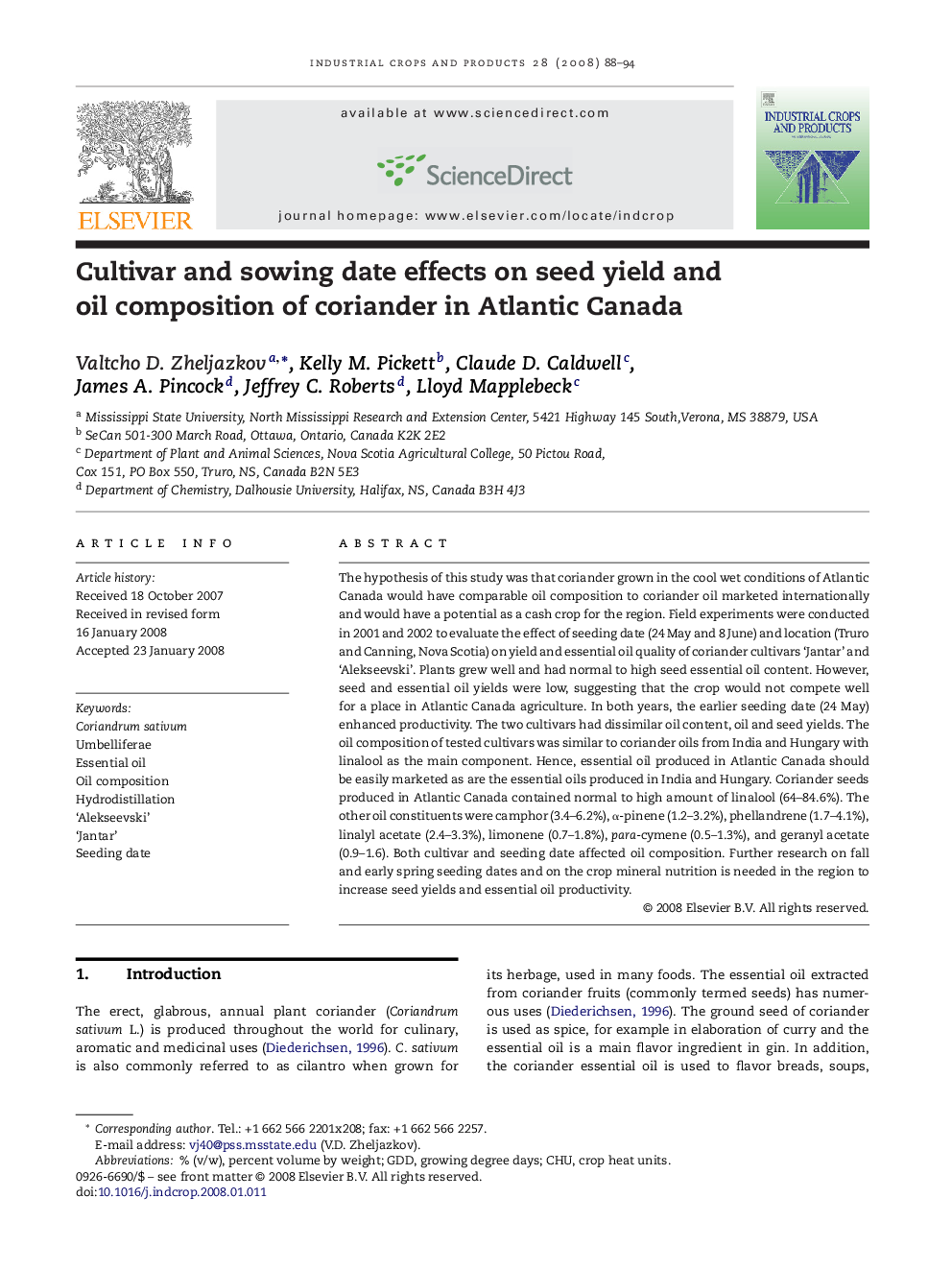| Article ID | Journal | Published Year | Pages | File Type |
|---|---|---|---|---|
| 4515076 | Industrial Crops and Products | 2008 | 7 Pages |
The hypothesis of this study was that coriander grown in the cool wet conditions of Atlantic Canada would have comparable oil composition to coriander oil marketed internationally and would have a potential as a cash crop for the region. Field experiments were conducted in 2001 and 2002 to evaluate the effect of seeding date (24 May and 8 June) and location (Truro and Canning, Nova Scotia) on yield and essential oil quality of coriander cultivars ‘Jantar’ and ‘Alekseevski’. Plants grew well and had normal to high seed essential oil content. However, seed and essential oil yields were low, suggesting that the crop would not compete well for a place in Atlantic Canada agriculture. In both years, the earlier seeding date (24 May) enhanced productivity. The two cultivars had dissimilar oil content, oil and seed yields. The oil composition of tested cultivars was similar to coriander oils from India and Hungary with linalool as the main component. Hence, essential oil produced in Atlantic Canada should be easily marketed as are the essential oils produced in India and Hungary. Coriander seeds produced in Atlantic Canada contained normal to high amount of linalool (64–84.6%). The other oil constituents were camphor (3.4–6.2%), α-pinene (1.2–3.2%), phellandrene (1.7–4.1%), linalyl acetate (2.4–3.3%), limonene (0.7–1.8%), para-cymene (0.5–1.3%), and geranyl acetate (0.9–1.6). Both cultivar and seeding date affected oil composition. Further research on fall and early spring seeding dates and on the crop mineral nutrition is needed in the region to increase seed yields and essential oil productivity.
